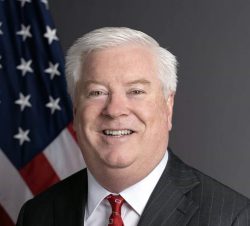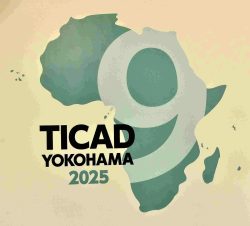December 3, 2021
The Regional Comprehensive Economic Partnership will come into force on January 1, 2022, creating an enormous free trade zone in the Asia-Pacific region.
The 10 member states of the Association of Southeast Asian Nations, as well as Japan, China, South Korea, Australia and New Zealand, participate in RCEP. They account for about 30% of the world’s population and gross domestic product. It is the first free trade pact Japan has concluded with China, its largest trading partner, and South Korea, its third-largest trade partner.
The forthcoming launch of RCEP is the culmination of Japan’s efforts, dating back to the 2010s, to hammer out multilateral economic partnership deals, including the Japan-European Union Economic Partnership Agreement and the Trans-Pacific Partnership (TPP11) trade pact, to facilitate freer trade among member economies.
The inauguration of RCEP also heralds the end of an era in which the so-called ASEAN Plus processes have played a pivotal role in promoting regional cooperation. ASEAN was instrumental in inaugurating regional cooperation in East Asia in the 2000s. It started the ASEAN Plus Three Summit, involving the 10-nation association, Japan, China and South Korea, and the East Asia Summit, among others.
However, ASEAN began gradually drifting in the 2010s because of the growing difference in geopolitical postures among its members and China’s intervention in ASEAN processes. The Indo-Pacific has since gained importance as an alternative regional cooperation framework to ASEAN, resulting in the emergence of such groupings as the Quad involving Japan, the United States, Australia and India, and AUKUS comprising the United States, Britain and Australia.
In light of these developments, it is time for Japan to review its external economic policies as part of its evolving grand strategy centered around a “free and open Indo-Pacific.”
Since the end of the Cold War, globalization has greatly changed the world. Developed countries accounted for about 80% of the world economy in 1990, but their share shrank to about 60% as of 2019 as emerging countries, especially China, achieved a rapid economic rise over the same period. China’s share of the world economy jumped from less than 2% in 1990 to more than 16% in 2019.
Of course, not every country in the world has democratized and adopted a market economy in the process of globalization. On the contrary, the changing power dynamics between developed and emerging countries have triggered, among other developments, the U.S.-China conflict, China’s economic sanctions against Australia, cyber-attacks to steal emerging technologies and intellectual property, and hostile corporate takeovers. Trade also has been weaponized to pursue national interests at the expense of other countries or to impose sanctions against other countries.
Japan should take these ongoing changes in the world into account when redefining the purpose of its external economic policies with a view to further ensuring its own security and prosperity and the stability and prosperity of a free and open Indo-Pacific. To put it more simply, is it all right for Japan to adhere to its existing trade policy — which is primarily aimed at promoting trade liberalization — in the coming years?
When considering the future of Japan’s trade policy, China’s recent application to join the TPP can serve as a pertinent test for Japan to choose what it should do from now on with regard to trade diplomacy.
A standard answer perhaps goes like this: It is up to the existing TPP member economies to decide whether to initiate consultations with Beijing following China’s submission of its membership application and, if they embark on such consultations, to say yes or no on their own to the Chinese bid. The TPP is strikingly elaborate and extensive with no exceptional treatment allowed. In other words, if China really wants to be a TPP member economy, it must agree before consultations start to comply with all the obligations set forth in the accord.
Therefore, the current members should start negotiations with China without easing the TPP’s take-it-or-leave-it policy, focusing on such issues as the regulation of state-owned enterprises, the transparency and fairness of data distribution, and the basic rights of workers.
This approach appears to be reasonable as far as negotiations with China are concerned.
Sinicization of TPP?
But I have serious doubts about the standard argument.
First, some of the member economies that rely greatly on trade with China either are afraid of Beijing imposing economic sanctions on them, or hope to increase exports to China. For these reasons, they may take a conciliatory stance toward Beijing, to the extent that they will favor its participation in the TPP even to the point of adopting exceptional measures for China. If China manages to join in this way, the TPP framework will eventually change to allow the plurilateral partnership to be “Sinicized.”
Second, once China becomes a TPP member, it will have the power, like all the other members, to veto any new application to join. Perhaps because of this possibility, Taiwan applied to join the TPP the week after China’s bid. Even if the United States changes its mind and wants to return to the TPP in the future, this would be difficult if China has the right of veto.
Third, if China actually joins the current 11 member economies, the TPP may face the problem of whether it can be trusted to abide by its promises. It is one thing to promise something and another to perform. When China became a member of the World Trade Organization in 2001, it pledged to implement relevant domestic legislation to comply with WTO rules, but it has yet to fulfill part of its WTO-related obligations. It still unfairly subsidizes industry, among other things.
Beijing signed a free trade agreement with Canberra but imposed economic sanctions on Australia for political reasons. Likewise, despite being a party to the U.N. Convention on the Law of the Sea, China has repeatedly conducted maritime activities in the South China Sea in violation of that treaty. As such, it should not be forgotten that China is highly likely to demand exceptional measures from the TPP suited to its own needs or deliberately skirt certain TPP rules.
Under the circumstances, Japan should be very cautious about accepting China’s request to initiate negotiations toward TPP membership.
What is now being put to the test is not how Japan can advance trade liberalization but how it should locate its external economic policies in its grand strategy. The key to finding the right answer lies in how Japan will work closely with trustworthy, reliable countries to establish multilayered coalitions in the security and economic spheres, based on a regional security system that is led by the United States and reinforced by the Japan-U.S. alliance and the U.S.-Australia alliance. Efforts to that end are already underway.
Japan and the United States have been strengthening bilateral cooperation over economic security. In April this year, then Prime Minister Yoshihide Suga and U.S. President Joe Biden launched a new “Competitiveness and Resilience Partnership” at a summit in Washington. Specifically, they affirmed their commitment to deepening cooperation in research and technology development in artificial intelligence, quantum technology and civil space, among others. They also pledged to further partner on ultra-fast, ultra-broadband 5th-generation (5G) wireless networks and sensitive supply chains, including those for semiconductors.
Japan and Australia have a de facto alliance. For instance, the two countries closely cooperated in spearheading the effort by all 11 countries to successfully keep the TPP afloat without the participation of the United States. In their summit in September, the leaders of the Quad reaffirmed increased cooperation in such areas as ramping up cybersecurity and combating the climate crisis.
There are more areas in which Japan can join hands with trustworthy and reliable countries.
One example is the initiative of a coalition of partners for the development, clinical trials and manufacturing of COVID-19 vaccines. Another example is the project to produce artificial fuel by synthesizing hydrogen extracted from renewable energy and carbon dioxide collected from manufacturing processes. This synthetic fuel project will likely become a platform for Japan to cooperate with other countries to fulfill its international pledge to achieve net-zero greenhouse gas emission targets, ensuring economic security and forging a “free and open Indo-Pacific.”
The era in which trade policy was aimed at promoting trade liberalization through economic partnership agreements and free trade agreements is over. The current challenge for Japan is to come up with an external economic policy that is consistent with new industrial policies such as a new green growth strategy and economic security, while seeking to improve the quality of free trade by deepening partnerships with trustworthy, reliable countries.
"Editorial & Columns" POPULAR ARTICLE
-

Violations of Subcontract Law: Major Automakers Must Eliminate Old Practices
-

Local Governments’ Tax Revenues: Devise Ways to Correct Imbalances in Tax Sources
-

5 Japanese Business Dinner Mistakes to Avoid — and What They Taught Me About Business in Japan
-

Heavy Rains in Asia: Support for Victims, Flood-Control Measures Urgently Needed
-

Rice Coupons: A Misguided Approach to Countering Rising Prices
JN ACCESS RANKING
-

Keidanren Chairman Yoshinobu Tsutsui Visits Kashiwazaki-Kariwa Nuclear Power Plant; Inspects New Emergency Safety System
-

Imports of Rare Earths from China Facing Delays, May Be Caused by Deterioration of Japan-China Relations
-

University of Tokyo Professor Discusses Japanese Economic Security in Interview Ahead of Forum
-

Japan Pulls out of Vietnam Nuclear Project, Complicating Hanoi’s Power Plans
-

Govt Aims to Expand NISA Program Lineup, Abolish Age Restriction






















